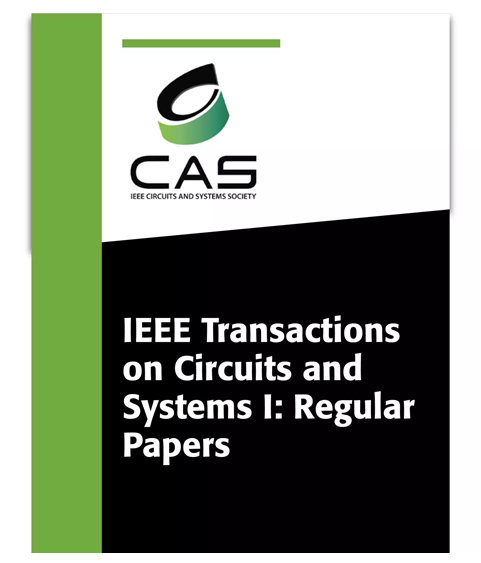Fast Coding Unit Depth Identification Using Texture and Multiple Deep Learning Architectures
IF 5.2
1区 工程技术
Q1 ENGINEERING, ELECTRICAL & ELECTRONIC
IEEE Transactions on Circuits and Systems I: Regular Papers
Pub Date : 2025-01-13
DOI:10.1109/TCSI.2025.3526636
引用次数: 0
Abstract
High-Efficiency Video Coding (HEVC), often known as H.265, is a new video coding standard that offers substantially better compression efficiency than the previous standard, H.264 while maintaining the same video quality. In HEVC, the quadtree partition method divides Coding Tree Units (CTUs) into Coding Units (CUs). This coding unit partition is recursive and increases computational complexity because it is dependent on rate-distortion optimization (RDO). In this paper, we propose a texture and deep learning-based system, that initiates the CU partition by the calculation of the CU texture attributes. Coding units are classified into three categories based on texturing properties. Class 1 represents mostly homogeneous regions, Class 2 mostly non-homogeneous regions, and Class 3 other regions. Only class 3 blocks are sent through the deep learning architecture. As a result, the total number of blocks partitioned by the deep learning architecture is lowered. We also proposed three distinct deep learning-based architectures in our system for coding unit partitioning, which eliminates the need for rate-distortion optimization and thereby decreases computational complexity. The input to our proposed texture and deep learning-based system is an image of size使用纹理和多个深度学习架构的快速编码单元深度识别
高效视频编码(HEVC),通常被称为H.265,是一种新的视频编码标准,在保持相同视频质量的同时,它提供了比以前的标准H.264更好的压缩效率。在HEVC中,四叉树划分方法将编码树单元(Coding Tree Units, ctu)划分为编码单元(Coding Units, cu)。这种编码单元划分是递归的,并且由于依赖于率失真优化(RDO)而增加了计算复杂度。在本文中,我们提出了一个基于纹理和深度学习的系统,该系统通过计算CU纹理属性来启动CU划分。编码单元根据纹理属性分为三类。第1类主要代表同质区域,第2类主要代表非同质区域,第3类代表其他区域。只有第3类块通过深度学习架构发送。因此,深度学习架构划分的块总数降低了。我们还在我们的编码单元划分系统中提出了三种不同的基于深度学习的架构,这消除了对率失真优化的需要,从而降低了计算复杂性。我们提出的基于纹理和深度学习的系统的输入是一个大小为$64\ × 64$ (CTU)的图像,而输出是一个表示编码树单元深度的$1\ × 16$向量。仿真结果验证了系统的有效性。与现有模型相比,我们提出的CU- cnn、CU- mobilenet和CU- resnet分别将CU分区的编码时间缩短了68.41%、75.77%和88.08%。此外,结果表明,采用CU-MobileNet模型的系统适用于移动或轻量级应用,而CU-Resnet模型适用于时间关键型或高速应用。
本文章由计算机程序翻译,如有差异,请以英文原文为准。
求助全文
约1分钟内获得全文
求助全文
来源期刊
CiteScore
9.80
自引率
11.80%
发文量
441
审稿时长
2 months
期刊介绍:
TCAS I publishes regular papers in the field specified by the theory, analysis, design, and practical implementations of circuits, and the application of circuit techniques to systems and to signal processing. Included is the whole spectrum from basic scientific theory to industrial applications. The field of interest covered includes: - Circuits: Analog, Digital and Mixed Signal Circuits and Systems - Nonlinear Circuits and Systems, Integrated Sensors, MEMS and Systems on Chip, Nanoscale Circuits and Systems, Optoelectronic - Circuits and Systems, Power Electronics and Systems - Software for Analog-and-Logic Circuits and Systems - Control aspects of Circuits and Systems.

 求助内容:
求助内容: 应助结果提醒方式:
应助结果提醒方式:


